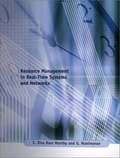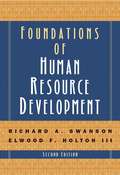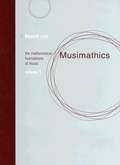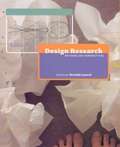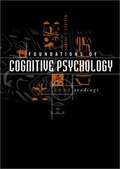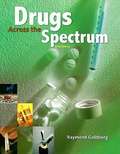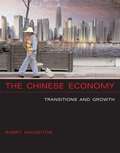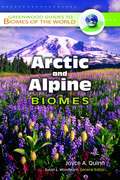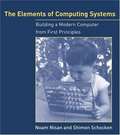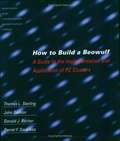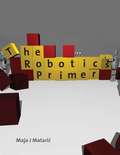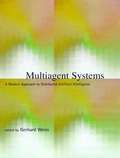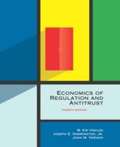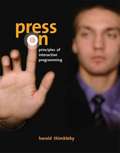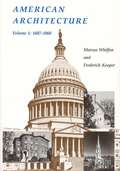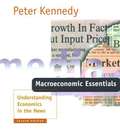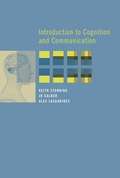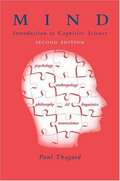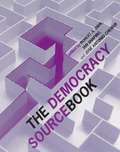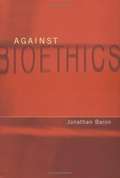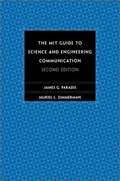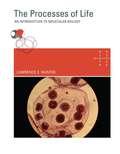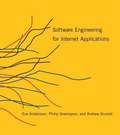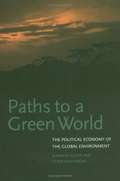- Table View
- List View
Resource Management in Real-Time Systems and Networks
by C. Siva Ram Murthy G. ManimaranReal-time systems and networks are of increasing importance in many applications, including automated factories, telecommunication systems, defense systems, and space systems. This book introduces the concepts and state-of-the-art research developments of resource management in real-time systems and networks. Unlike other texts in the field, it covers the entire spectrum of issues in resource management, including task scheduling in uniprocessor real-time systems; task scheduling, fault-tolerant task scheduling, and resource reclaiming in multiprocessor real-time systems; conventional task scheduling and object-based task scheduling in distributed real-time systems; message scheduling; QoS routing; dependable communication; multicast communication; and medium access protocols in real-time networks. It provides algorithmic treatments for all of the issues addressed, highlighting the intuition behind each algorithm and giving examples. The book also includes two chapters of case studies.
Foundations of Human Resource Development (2nd edition)
by Richard A. Swanson Elwood F. Holton IIIFor students, researchers, and practitioners, Swanson (human resource development, U. of Texas at Tyler) and Holton (human resource and leadership development, Louisiana State U.) provide a textbook on human resource development (HRD) that focuses on the fundamentals and foundations of practice that does not focus on best practices. Instead, it addresses models, processes, history, theoretical and philosophical foundations, learning and performance paradigms and models, the role of HRD in high-level organizational and systems-level issues, and training and development and organization development. This edition has been revised, updated, and expanded to include new chapters on component HRD theories, policy and planning, technology, and globalization. Annotation ©2009 Book News, Inc., Portland, OR (booknews.com)
Musimathics: The Mathematical Foundations of Music, Volume 1
by Gareth LoyMathematics can be as effortless as humming a tune, if you know the tune, writes Gareth Loy. In Musimathics, Loy teaches us the tune, providing a friendly and spirited tour of the mathematics of music--a commonsense, self-contained introduction for the nonspecialist reader. It is designed for musicians who find their art increasingly mediated by technology, and for anyone who is interested in the intersection of art and science. In this volume, Loy presents the materials of music (notes, intervals, and scales); the physical properties of music (frequency, amplitude, duration, and timbre); the perception of music and sound (how we hear); and music composition. Musimathics is carefully structured so that new topics depend strictly on topics already presented, carrying the reader progressively from basic subjects to more advanced ones. Cross-references point to related topics and an extensive glossary defines commonly used terms. The book explains the mathematics and physics of music for the reader whose mathematics may not have gone beyond the early undergraduate level. Calling himself "a composer seduced into mathematics," Loy provides answers to foundational questions about the mathematics of music accessibly yet rigorously. The topics are all subjects that contemporary composers, musicians, and musical engineers have found to be important. The examples given are all practical problems in music and audio. The level of scholarship and the pedagogical approach also make Musimathics ideal for classroom use. Additional material can be found at a companion web site.
Design Research: Methods and Perspectives
by Brenda Laurel Peter LunenfeldThe tools of design research, writes Brenda Laurel, will allow designers "to claim and direct the power of their profession." Often neglected in the various curricula of design schools, the new models of design research described in this book help designers to investigate people, form, and process in ways that can make their work more potent and more delightful. "At the very least," Peter Lunenfeld writes in the preface, "design research saves us from reinventing the wheel. At its best, a lively research methodology can reinvigorate the passion that so often fades after designers join the profession." The goal of the book is to introduce designers to the many research tools that can be used to inform design as well as to ideas about how and when to deploy them effectively. The chapter authors come from diverse institutions and enterprises, including Stanford University, MIT, Intel, Maxis, Studio Anybody, Sweden?s HUMlab, and Big Blue Dot. Each has something to say about how designers make themselves better at what they do through research, and illustrates it with real world examples--case studies, anecdotes, and images. Topics of this multi-voice conversation include qualitative and quantitative methods, performance ethnography and design improvisation, trend research, cultural diversity, formal and structural research practice, tactical discussions of design research process, and case studies drawn from areas as unique as computer games, museum information systems, and movies. Interspersed throughout the book are one-page "demos," snapshots of the design research experience. Design Research charts the paths from research methods to research findings to design principles to design results and demonstrates the transformation of theory into a richly satisfying and more reliably successful practice.
Foundations of Cognitive Psychology: Core Readings
by Daniel J. LevitinScientists from many disciplines, including physics, chemistry, biology, and neuroscience, contribute to the study of cognition. Cognitive psychology, the science of the human mind and of how people process information, is at the core of empirical investigations into the nature of mind and thought. This anthology is based on the assumption that cognitive psychology is at heart empirical philosophy. Many of the core questions about thought, language, perception, memory, and knowledge of other people's minds were for centuries the domain of philosophy. The book begins with the philosophical foundations of inquiry into the nature of mind and thought, in particular the writings of Descartes, and then covers the principal topics of cognitive psychology including memory, attention, and decision making. The book organizes a daunting amount of information, underlining the essentials, while also introducing readers to the ambiguities and controversies of research. It is arranged thematically and includes many topics not typically taught in cognition courses, including human factors and ergonomics, evolutionary psychology, music cognition, and experimental design. The contributors include Daniel Dennett, Daniel Kahneman, Jay McClelland, Donald Norman, Michael Posner, Stephen Palmer, Eleanor Rosch, John Searle, Roger Shepard, and Anne Treisman.
Drugs Across the Spectrum (6th edition)
by Raymond GoldbergIn this undergraduate textbook, Goldberg (State U. of New York at Cortland) surveys the physiological, psychological, and sociological literature on the use and abuse of licit and illicit drugs. Opening chapters provide an overview of drugs in contemporary society, motivations for drug use, drugs and the law, and the pharmacology and physiology of drug use. The psychological and physiological effects of drugs are then explored in individual chapters covering alcohol; tobacco; narcotics; sedative-hypnotic drugs; psychotherapeutic drugs; stimulants (cocaine, amphetamines, and caffeine); marijuana; and over-the-counter drugs. A final pair of chapters summarizes the research on substance abuse treatment and drug prevention and education. Annotation ©2005 Book News, Inc., Portland, OR (booknews.com)
The Chinese Economy: Transitions and Growth
by Barry NaughtonThis comprehensive overview of the modern Chinese economy by a noted expert on China's economic development offers a quality and breadth of coverage not found in any other English-language text. In The Chinese Economy, Barry Naughton provides both an engaging, broadly focused introduction to China's economy since 1949 and original insights based on his own extensive research. The book will be an essential resource for students, teachers, scholars, business people, and policymakers. It is suitable for classroom use for undergraduate or graduate courses. After presenting background material on the pre-1949 economy and the industrialization, reform, and market transition that have taken place since, the book examines different aspects of the modern Chinese economy. It analyzes patterns of growth and development, including population growth and the one-child family policy; the rural economy, including agriculture and rural industrialization; industrial and technological development in urban areas; international trade and foreign investment; macroeconomic trends and cycles and the financial system; and the largely unaddressed problems of environmental quality and the sustainability of growth. The text is notable also for placing China's economy in interesting comparative contexts, discussing it in relation to other transitional or developing economies and to such advanced industrial countries as the U.S. and Japan. It provides both a broad historical and macro perspective as well as a focused examination of the actual workings of China's complex and dynamic economic development. Interest in the Chinese economy will only grow as China becomes an increasingly important player on the world's stage. This book will be the standard reference for understanding and teaching about the next economic superpower.
Arctic and Alpine Biomes (Greenwood Guides to Biomes of the World)
by Joyce A. QuinnThe latest entry in the Guides to Biomes of the World series from Greenwood Press focuses on arctic and alpine climate zones, also known as the tundra, and provides a detailed study of the hardiest flora and fauna on the planet. Quinn (California State U., Fresno) offers straightforward descriptions of each of these biomes, dividing the information between arctic, Antarctic, alpine and even tropical alpine biomes such as the Andes and the highest zones of Hawaiian volcanoes. Written primarily as a textbook for geography students, this book also features vivid color photographs from these regions.
Juvenile Justice (5th edition)
by Karen M. HessGain a practical and comprehensive understanding of the juvenile justice system with JUVENILE JUSTICE, Fifth Edition. Highly accessible and student friendly, this text explores various programs and processes that exist in today's juvenile justice system, including prevention efforts through school and community-based programs. The fifth edition also includes expanded coverage of measurement, victimization, differences between the adult and juvenile justice systems, diversity, gangs, future trends in the field, cutting-edge policies, and more.
The Elements of Computing Systems: Building a Modern Computer from First Principles
by Noam Nisan Shimon SchockenIn the early days of computer science, the interactions of hardware, software, compilers, and operating system were simple enough to allow students to see an overall picture of how computers worked. With the increasing complexity of computer technology and the resulting specialization of knowledge, such clarity is often lost. Unlike other texts that cover only one aspect of the field, The Elements of Computing Systems gives students an integrated and rigorous picture of applied computer science, as its comes to play in the construction of a simple yet powerful computer system. Indeed, the best way to understand how computers work is to build one from scratch, and this textbook leads students through twelve chapters and projects that gradually build a basic hardware platform and a modern software hierarchy from the ground up. In the process, the students gain hands-on knowledge of hardware architecture, operating systems, programming languages, compilers, data structures, algorithms, and software engineering. Using this constructive approach, the book exposes a significant body of computer science knowledge and demonstrates how theoretical and applied techniques taught in other courses fit into the overall picture. Designed to support one- or two-semester courses, the book is based on an abstraction-implementation paradigm; each chapter presents a key hardware or software abstraction, a proposed implementation that makes it concrete, and an actual project. The emerging computer system can be built by following the chapters, although this is only one option, since the projects are self-contained and can be done or skipped in any order. All the computer science knowledge necessary for completing the projects is embedded in the book, the only pre-requisite being a programming experience. The book's web site provides all tools and materials necessary to build all the hardware and software systems described in the text, including two hundred test programs for the twelve projects. The projects and systems can be modified to meet various teaching needs, and all the supplied software is open-source.
How to Build a Beowulf: A Guide to the Implementation and Application of PC Clusters
by Thomas L. Sterling John Salmon Donald J. Becker Daniel F. SavareseSupercomputing research--the goal of which is to make computers that are ever faster and more powerful--has been at the cutting edge of computer technology since the early 1960s. Until recently, research cost in the millions of dollars, and many of the companies that originally made supercomputers are now out of business. The early supercomputers used distributed computing and parallel processing to link processors together in a single machine, often called a mainframe. Exploiting the same technology, researchers are now using off-the-shelf PCs to produce computers with supercomputer performance. It is now possible to make a supercomputer for less than $40,000. Given this new affordability, a number of universities and research laboratories are experimenting with installing such Beowulf-type systems in their facilities. This how-to guide provides step-by-step instructions for building a Beowulf-type computer, including the physical elements that make up a clustered PC computing system, the software required (most of which is freely available), and insights on how to organize the code to exploit parallelism. The book also includes a list of potential pitfalls.
The Robotics Primer
by Maja J. MatarićChoice Outstanding Academic Title, 2008. The Robotics Primer offers a broadly accessible introduction to robotics for students at pre-university and university levels, robot hobbyists, and anyone interested in this burgeoning field. The text takes the reader from the most basic concepts (including perception and movement) to the most novel and sophisticated applications and topics (humanoids, shape-shifting robots, space robotics), with an emphasis on what it takes to create autonomous intelligent robot behavior. The core concepts of robotics are carried through from fundamental definitions to more complex explanations, all presented in an engaging, conversational style that will appeal to readers of different backgrounds. The Robotics Primer covers such topics as the definition of robotics, the history of robotics ("Where do Robots Come From?"), robot components, locomotion, manipulation, sensors, control, control architectures, representation, behavior ("Making Your Robot Behave"), navigation, group robotics, learning, and the future of robotics (and its ethical implications). To encourage further engagement, experimentation, and course and lesson design, The Robotics Primer is accompanied by a free robot programming exercise workbook. The Robotics Primer is unique as a principled, pedagogical treatment of the topic that is accessible to a broad audience; the only prerequisites are curiosity and attention. It can be used effectively in an educational setting or more informally for self-instruction. The Robotics Primer is a springboard for readers of all backgrounds--including students taking robotics as an elective outside the major, graduate students preparing to specialize in robotics, and K-12 teachers who bring robotics into their classrooms.
Multiagent Systems: A Modern Approach to Distributed Artificial Intelligence
by Gerhard WeissThis is the first comprehensive introduction to multiagent systems and contemporary distributed artificial intelligence that is suitable as a textbook.
Economics of Regulation and Antitrust (4th edition)
by W. Kip Viscusi Joseph E. Harrington John M. VernonThis new edition of the leading text on business and government focuses on the insights economic reasoning can provide in analyzing regulatory and antitrust issues. Departing from the traditional emphasis on institutions, Economics of Regulation and Antitrust tasks how economic theory and empirical analysis can illuminate the character of market operation and the role for government action and brings new developments in theory and empirical methodology to bear on these questions. The fourth edition has been substantially revised and updated throughout, with new material added and extended discussion of many topics. Part I, on antitrust, has been given a major revision to reflect advances in economic theory and recent antitrust cases, including the case against Microsoft and the Supreme Court's Kodak decision. Part II, on economic regulation, updates its treatment of the restructuring and deregulation of the telecommunications and electric power industries, and includes an analysis of what went wrong in the California energy market in 2000 and 2001. Part III, on social regulation, now includes increased discussion of risk-risk analysis and extensive changes to its discussion of environmental regulation. The many case studies included provide students not only pertinent insights for today but also the economic tools to analyze the implications of regulations and antitrust policies in the future. The book is suitable for use in a wide range of courses in business, law, and public policy, for undergraduates as well at the graduate level. The structure of the book allows instructors to combine the chapters in various ways according to their needs. Presentation of more advanced material is self-contained. Each chapter concludes with questions and problems.
Press On: Principles of Interaction Programming
by Harold ThimblebyInteractive systems and devices, from mobile phones to office copiers, do not fulfill their potential for a wide variety of reasons--not all of them technical. Press On shows that we can design better interactive systems and devices if we draw on sound computer science principles. It uses state machines and graph theory as a powerful and insightful way to analyze and design better interfaces and examines specific designs and creative solutions to design problems. Programmers--who have the technical knowledge that designers and users often lack--can be more creative and more central to interaction design than we might think. Sound programming concepts improve device design. Press On provides the insights, concepts and programming tools to improve usability. Knowing the computer science is fundamental, but Press On also shows how essential it is to have the right approaches to manage the design of systems that people use. Particularly for complex systems, the social, psychological and ethical concerns--the wider design issues--are crucial, and these are covered in depth. Press On highlights key principles throughout the text and provides cross-topic linkages between chapters and suggestions for further reading. Additional material, including all the program code used in the book, is available on an interactive web site. Press On is an essential textbook and reference for computer science students, programmers, and anyone interested in the design of interactive technologies.
American Architecture: 1607-1860
by Marcus Whiffen Frederick KoeperThe first volume of a two-volume survey of American Architecture, this book covers architectural developments from Jamestown to the Civil War.
Macroeconomics Essentials: Understanding Economics in the News (Second Edition)
by Peter KennedyWhat do we want our students to be able to do upon completing an introductory course in macroeconomics--shift curves on diagrams or interpret media commentary on the economy? This book, an effort to lead students in the latter direction, offers a clear exposition of introductory macroeconomic theory along with more than 600 one- or two-sentence "news clips" that serve as illustrations and exercises. The author calls this approach "media economics" to distinguish it from the encyclopedic character of traditional texts. The book provides a guide to what the author calls the "really important" ideas of macroeconomics, with a strong connection to the real world. Thus many instructors will find the book suitable for use in courses enrolling business students. The method of presentation allows room for topics that are crucial for the interpretation of news commentary, but given inadequate coverage in traditional macroeconomics texts. Examples include the many roles of nominal versus real interest rates, and international phenomena such as purchasing power parity. Despite its nontechnical presentation, the material in the book is quite challenging for students; to answer questions based on the news clips, students must truly understand the economic concepts and apply problem-solving skills rather than rote learning. This text, unlike other economic texts, provides the student with a practical yet sophisticated grasp of the macroeconomic principles necessary to interpret media commentary. The second edition has been revised and updated throughout.
Introduction to Cognition and Communication
by Keith Stenning Alex Lascarides Jo CalderThis introduction to the interdisciplinary study of cognition takes the novel approach of bringing several disciplines to bear on the subject of communication. Using the perspectives of linguistics, logic, AI, philosophy, and psychology--the component fields of cognitive science--to explore topics in human communication in depth, the book shows readers and students from any background how these disciplines developed their distinctive views, and how those views interact. The book introduces some sample phenomena of human communication that illustrate the approach of cognitive science in understanding the mind, and then considers theoretical issues, including the relation of logic and computation and the concept of representation. It describes the development of a model of natural language and explores the link between an utterance and its meaning and how this can be described in a formal way on the basis of recent advances in AI research. It looks at communication employing graphical messages and the similarities and differences between language and diagrams. Finally, the book considers some general philosophical critiques of computational models of mind. The book can be used at a number of different levels. A glossary, suggestions for further reading, and a Web site with multiple-choice questions are provided for nonspecialist students; advanced students can supplement the material with readings that take the topics into greater depth.
Mind: Introduction to Cognitive Science (2nd edition)
by Paul ThagardCognitive science approaches the study of mind and intelligence from an interdisciplinary perspective, working at the intersection of philosophy, psychology, artificial intelligence, neuroscience, linguistics, and anthropology. With Mind, Paul Thagard offers an introduction to this interdisciplinary field for readers who come to the subject with very different backgrounds. It is suitable for classroom use by students with interests ranging from computer science and engineering to psychology and philosophy. Thagard's systematic descriptions and evaluations of the main theories of mental representation advanced by cognitive scientists allow students to see that there are many complementary approaches to the investigation of mind. The fundamental theoretical perspectives he describes include logic, rules, concepts, analogies, images, and connections (artificial neural networks). The discussion of these theories provides an integrated view of the different achievements of the various fields of cognitive science. This second edition includes substantial revision and new material. Part I, which presents the different theoretical approaches, has been updated in light of recent work the field. Part II, which treats extensions to cognitive science, has been thoroughly revised, with new chapters added on brains, emotions, and consciousness. Other additions include a list of relevant Web sites at the end of each chapter and a glossary at the end of the book. As in the first edition, each chapter concludes with a summary and suggestions for further reading.
The Democracy Sourcebook
by Robert Alan Dahl I. Shapiro José Antonio CheibubThe Democracy Sourcebook offers a collection of classic writings and contemporary scholarship on democracy, creating a book that can be used by undergraduate and graduate students in a wide variety of courses, including American politics.
Against Bioethics
by Jonathan BaronGovernments, health professionals, patients, research institutions, and research subjects look to bioethicists for guidance in making important decisions about medical treatment and research.
The MIT Guide to Science and Engineering Communication (Second Edition)
by James G. Paradis Muriel L. ZimmermanThis guide covers the basics of scientific and engineering communication, including defining an audience, working with collaborators, searching the literature, organizing and drafting documents, developing graphics, and documenting sources.
The Processes of Life: An Introduction to Molecular Biology
by Lawrence E. HunterRecent research in molecular biology has produced a remarkably detailed understanding of how living things operate.
Software Engineering for Internet Applications
by Eve Astrid Andersson Philip Greenspun Andrew GrumetAfter completing this self-contained course on server-based Internet applications software, students who start with only the knowledge of how to write and debug a computer program will have learned how to build web-based applications.
Paths to a Green World: The Political Economy of the Global Environment
by Jennifer Clapp Peter DauvergneThis comprehensive and accessible text fills the need for a political economy view of global environmental politics, focusing on the ways key economic processes affect environmental outcomes.
